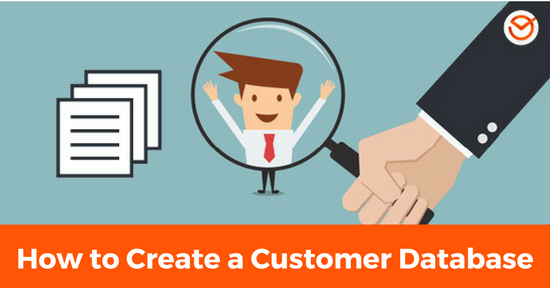


We understand that you’re always busy handling effective projects, following up with employees, meeting with new clients and fulfilling in on your promises with current ones… and so on.
But no matter how much busy you are, you can never ignore the importance of maintaining a complete, up-to-date client database so you can send out the right branded marketing materials or simply reach them by phone to suggest the right solution / service / offer that addresses a problem or fulfills a certain need for them.
The reality ? You’re not getting as much repeat business or as many referrals as you should be. In other words, you’re not efficiently growing your customer base, and you might even be losing some great business opportunities with your current clients.
What could you possibly be doing to sabotage your client relationships?
If you’re like many of our clients, you’re not regularly communicating and not following up with your top clients consistently. And when you do connect with contacts, you probably don’t have the information at your fingertips to steer your conversation in a meaningful direction. You’re marketing to the same people month after month, and while it may produce some good referrals and occasional repeat transactions, you’re not able to actively grow your business the way that you’d like.
This is why you need to implement a Contact Management System. By doing so, you’ll have a single resource to house all of your contact information, so you can easily segment your list and prioritize marketing efforts. And including notes on recent encounters will give you information that can help make your follow-up calls more successful.
But, there’s a bit of a catch with contact databases. While you don’t want to spend a lot of money on a customer relationship management (CRM) system too soon, you need the functionality of a contact database to significantly grow.
Read on to find out how you can create a simple, yet powerful contact management database that provides the desired results:
If you’re creating your database from scratch, you’ll want to include columns for basic contact information, such as:
First and last name
Brand / Company Name
E-mail address.
Street address
City, state, and zip code
Phone number
Even if you don’t have all of this information, you’ll want to record what you do have. Having at least the contact name and email / phone number can do you a great job and remind you to fill the blank fields to gather the info when you have the opportunity.
Other ways to identify and segment your contacts include the value they represent (for example, through past transactions, referrals, or estimated lifetime value), the length of the relationship, or any other criteria you use to identify sales opportunities.
Remember: 80 percent of your business comes from 20 percent of your clients, so you’ll need to know who they are and what they need.
Important dates.
It’s crucial that you know the last time you worked with (or spoke to), as well as what your goals are for a follow-up call / email. You can use this information to make sure you aren’t going too long without keeping in touch.
Type of contact.
Whether you’re speaking over the phone, sending email, or planning a direct mail effort, you need to communicate differently with certain audiences. What you say to clients will not necessarily be the same as what you say to prospects. Furthermore, the materials you send to your clients may not necessarily be the right ones that should be sent to prospects. Your spheres of influence need unique messages as well. By categorizing your contacts, you can easily sort and segment them for more targeted marketing opportunities.
Notes about recent conversations or encounters.
This info is invaluable when following up, and it’s too important to trust to memory. Record notes about what you discussed during a recent conversation, reminders to yourself to follow up on specific topics, or even personal information about the contact, such as birthdays, or hobbies.
Social media accounts.
Not only can you communicate with clients, prospects, and influencers you are connected with on these channels, you can also use them to glean information that will help you build and strengthen relationships.
Begin by gathering all of your existing contact data from your personal address book, recent sales transaction documents, your email list, and even your mobile call logs. Spend some time entering as much info as you have, and make it a goal to call contacts to fill in any gaps. (This is a great excuse for a follow-up call!)
Make sure you include everyone you have contact with—clients, business partners, prospects, acquaintances, etc. This will likely be the most time-consuming part of the process, but trust us: it is well worth the effort.
Any contact database is only as good as the data it contains. So, for it to be effective, it needs to be up-to-date.
If you’re reviewing the database as frequently as you should be, this will become one of your most accessed documents. Following every encounter you have with a client or prospect, remember to update the notes section. As mentioned before, you’ll want to document events, actions you need to take, and other important information that comes out of your conversations. Make it a part of your routine to add information as you receive it, rather than waiting until you have a full list.
No matter which system you choose, it’s important to remember just how essential a clean, updated contact management database (CMD) is to your business. So, stop sabotaging your relationships, and prioritize more meaningful connections.
To have people share something of their own, you should offer something in return first – such an offer is called lead magnet. Depending on the features and purpose of your product, it can be free content, a discount, product demo or consultation.
Once you know what kind of lead magnet fits best, make sure users understand what they will get from you and why they will benefit from it. If this is a demo of the program – describe exactly how it works. If it’s an ebook, show several pages so they know what they’re getting in exchange for their information. Avoid creating a landing page that contains only a contact form without presenting specific information about the offer.
It’s always a good idea to show users what they will get after leaving an email address. If they get something other than expected, they will feel cheated and not willing to trust you again and share their data.
It’s quite natural that you want your customer database to contain as many valuable data as possible. You may have an impression this requires many fields in your excel sheet or sign-up form, but you should always keep barriers low and:
Avoid asking for data that you can obtain some other way, e.g. by extracting them from other databases.
Don’t require data that you will not use – it’s unlikely you will need such information as the client’s address if your product doesn’t need client locations.
Ask questions as simply as possible – long conversations or custom filled forms often scare your prospects away.
The right approach to extract valuable data is the “foot in the door” method. This rule says that you will achieve more success by asking for one small thing at a time. Getting an email address – if you don’t have it – is that “foot in the door” that allows you to ask for more later. If you give the user valuable materials and access to promotions and unique offers, it increases your credibility. This means you have a better chance that the user will share more information in the future. Automating this process can help to get the most out of the relationship you build.
The “foot in the door” method may be even more effective if fully automated, but it needs to be set up logically. It does not work to constantly harass someone at the beginning with an incentive to subscribe to a newsletter or join a database. Let’s allow the user first to know about the offer. If you want to encourage someone to subscribe to a newsletter, set up automation so that a notification will turn on when you open, say, the second article on the site.
Giving the client a little time increases the chance of signing up and adding up to your customer database.
Make sure you frame your message in the right terms. It’s about what they get, not you. Make it clear that signing up to your newsletter has concrete benefits like x, y and z.
Another method worth trying in automation is progressive profiling, the gradual acquisition of data gained through increased engagement. This can be done in a number of ways. You can, for example, offer more and different downloads, first by sending them to an email address, then asking for additional information before other downloads can be accessed. Materials can also be differentiated by offering discounts, coupons, ebooks, or invitations to events – with each one asking for something else from the user.
You may also play with intermediate profiling, which is gaining data in other ways, like asking subscribers to complete a quiz. This is what Teavana did to learn more about their customers and their preferences when it came to what kind of tea was best for them. Results from the quiz were used to adapt content for different customers.
One of the most common fear among people who rely on signup forms is that they will receive tons of unwanted calls and emails trying to sell them something. That’s why you need to make it clear why you ask for data and what you use it for. Stress that you:
· Don’t share the data with anyone else,
· Won’t send spam,
· Will make it clear what you will send and how often.
If you have a wide range of products or services, give the user a choice about what products or areas they want to inquire about. You can also send surveys asking about how often users want to receive information.
Making sure the forms on your page are mobile-friendly isn’t just an option, it’s mandatory. The harder it is for mobile users to interact with your site, the less likely they are to complete the signup process. Since there’s an endless number of mobile devices on the market, make sure your site displays properly on screens of different resolutions.
The problem with building a good quality customer database is not only about getting data. The real challenge lies in collecting real data that allow creating accurately targeted campaigns. It is worth taking time to get to know techniques and strategies that will help to maximize your databases’ potential. Apart from the eight steps we’ve provided, would you use any other tricks for obtaining quality data? Let us know in a comment, we’d love to hear from you!
In case you need assistance in…
· Creating, managing and directing the right message to the right customer,
· Ensuring your forms / website is responsive or mobile-friendly,
· OR if you already have your own client database and need help managing it / verifying client emails, crafting the right message and automating powerful E-marketing campaigns to turn prospects into customers,..
Reach out to VOILA expert team. We will always be there to address your specific needs.